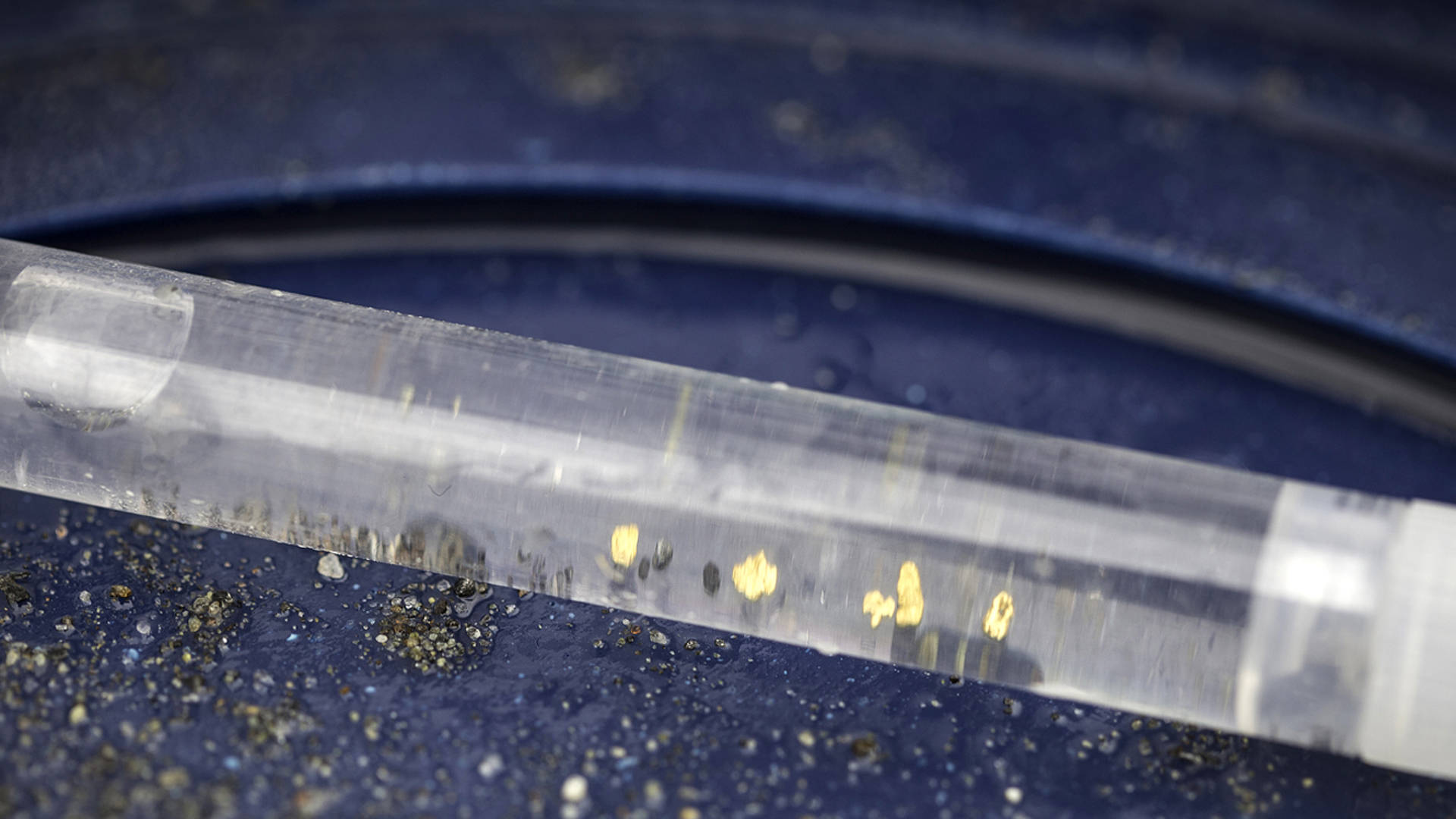Genuine gold panning with a long history
For centuries, Rauris Valley was rightly regarded as the center of gold mining in Austria. Today, treasure hunters big and small can set out in the tracks of those gold prospectors of long ago.
Very probably, gold mining in Rauris began all the way back in Celtic and Roman times. Just one indication of this is the discovery of a Celtic neck ring, which was unearthed in the Seidlwinkltal in 1874. Today, a copy of this neck ring and its history are on display at the Rauris Valley Museum.
In its heyday, which lasted from around 1460 to 1560 A.D., around 10% of the world’s gold production was focused in Rauris and Gastein Valleys. At the very height of production in 1550, there were 450 (!) active mines in Rauris.
At the end of the 14th century, the first golden guilders were being minted from Tauern gold on a large scale. At the turn of the 16th century, Salzburg was even nicknamed the “Peru of the Old World”.
At that time, gold mining in Rauris Valley was the predominant source of income. Today, treasure hunters, big and small, see if they, too, can strike it rich at two different gold-panning sites, sifting fine slivers of gold from the water – if they wish, with the help of a gold-panning expert. According to recent estimates, some 120 tons of gold are still hidden away in the mountains of the Goldberg Group!
Experience this Golden Valley More about the valley's historyOne name you frequently hear in connection with gold mining in Rauris is that of Ignaz Rojacher – also known as "Kolm Naz". Rojacher was born in Gaisbachtal, the son of a mine carpenter, and was employed in the mines at the tender age of twelve as a “trolley-runner”. In the long term, the somewhat frail “Nazl” was not really up to this heavy work, and so Rojacher learned carpentry skills and worked his way up to the position of “Hutmann”, which would essentially be a foreman in today’s world.
Due to his outstanding abilities, Rojacher was sent by his supervisors to the mining school in Příbram, Bohemia, where he received instruction for four weeks. Before finally purchasing the gold mine in 1880 (with financial support provided by Wilhelm Ritter von Arlt), Rojacher had leased the mine from the Austrian state for four years. Rojacher was a true forward-thinker: He brought the telephone and electricity to Rauris Valley. The phone line ran from Gasthof Post to Kolm Saigurn, and then later up to the weather station on the Hoher Sonnblick, for the building of which he was also partly responsible. Apparently, there was actually electricity flowing in Rauris four years earlier than even in Salzburg! From a world exhibition in Paris, Rojacher returned with one of the first generators and, with the help of hydro power, was able to produce electricity .
The valley’s last professional gold panner, Hans Schabauer, ran a small wash plant in Bucheben between 1949 and 1960, featuring a shaft and winching tower, a building for living and processing, as well as appurtenant huts and warehousing facilities. Rauris produced a number of outstanding gold panners who were able to boast sensational gold finds over the course of the last century.
Would you like to learn more about gold mining and the history of Rauris Valley in general? If so, the Valley Museum in Rauris and the Zimmererhütte at Kolm Saigurn valley head are definitely well worth a visit. For further information about opening times, please contact Rauris Tourist Office (T: +43 6544 200 22). .
5661 Rauris, Österreich
Tel.: +43 6544 6253
Gold occurs as a solid metal. Clumps of gold, the size of the grains of millet or hazelnuts, are the nuggets we know from adventure movies. In the streams flowing from the Tauern mountains, you discover small grains and flakes of gold.
Streams and rivers carry the gold particles along with the sand and silt. Because it is so heavy (specific gravity 19), gold sediments much more easily than sand or other minerals. In a body of running water, there are areas where the speed of the current, though still able to move small gravel and sand, tends to leave the gold behind. Here, we may well discover greater concentrations of gold.
The actual “panning” has been done, almost in the same way, since ancient times. The process involves moving the sediment of sand and gold in water, so that the sand is washed away and the gold remains ... gold panning is a science unto itself. At the two gold-panning sites in Rauris Valley, gold-panning professionals are happy to teach you the basics. We hope you have lots of fun and strike it “rich” during your treasure hunt!
